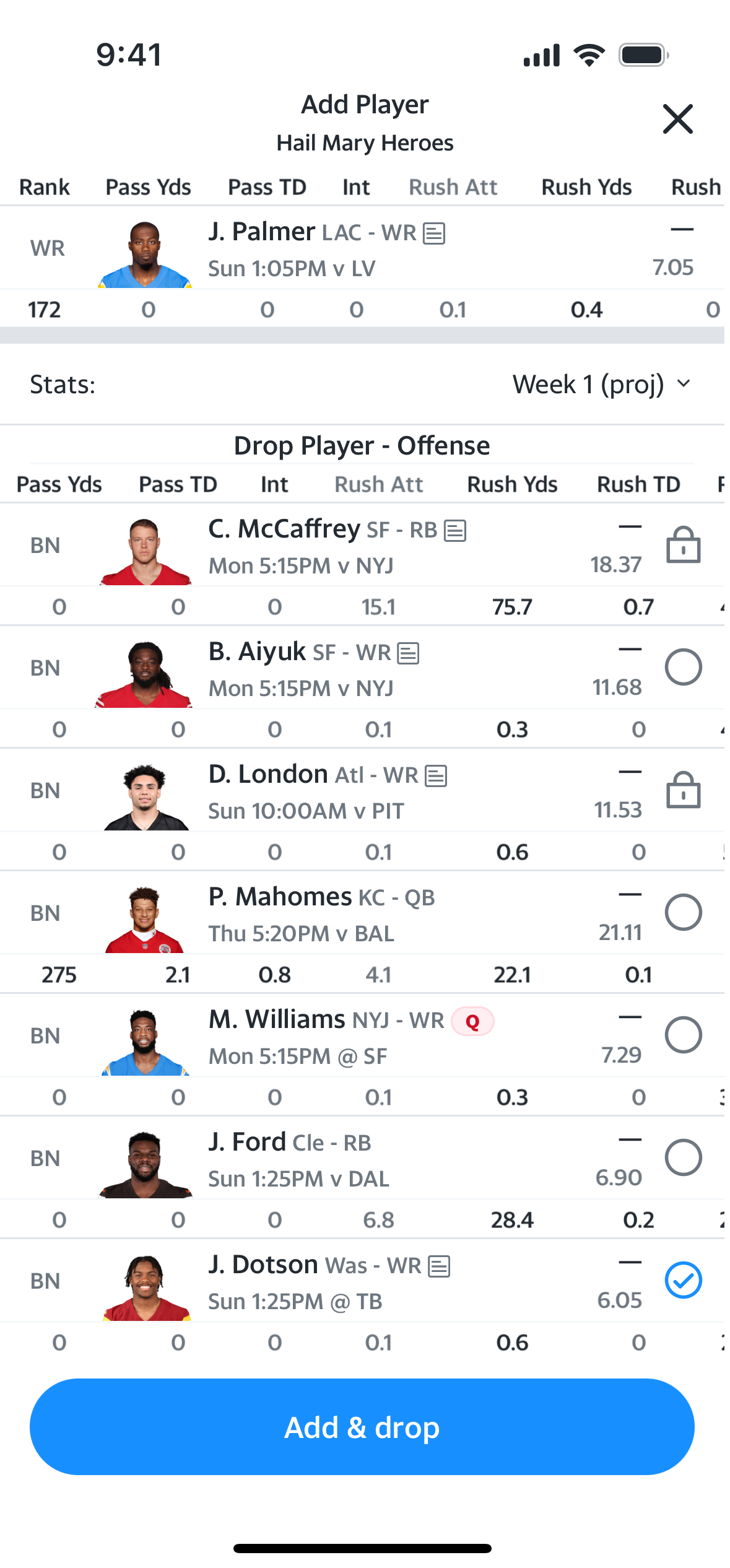Fantasy University: Course 201 — Winning your league on the waiver wire
The time shortly after your fantasy football draft is often a honeymoon period. You've probably assembled a team you like, a roster you're excited to follow. You should dream big. Imagine all the glory that could come your way after the season.
Then, of course, the NFL games start, and reality kicks in. Some of your players will play poorly, and some will get hurt. Others might be used sparingly, or get passed on the depth chart. Meanwhile, fresh fantasy contributors will start popping up around the league — players who were not deemed draft-worthy in the summer. The landscape is always changing.

This is where waivers come into play. This is your chance to freshly repaint your roster, to keep it healthy and active and trim and at its most competitive.
How the fantasy football waiver wire works
In most Yahoo leagues, waivers run shortly after 3 a.m. ET on Wednesday morning. Anytime before that deadline, you're responsible for setting claims on new players you want to acquire and designate a player to drop in a corresponding move to make room on your roster. Sometimes your acquisition request won't require a drop if you have an Injured Reserve spot to work with. But if you had past Injured Reserve players who are no longer deemed IR-eligible, you'll need to resolve your roster before you place your claims.
In some formats, players are assigned on waivers based on waiver priority, a rolling list that resets every week. In other formats, the players are allocated using an offer system, where each manager has to decide how much of their seasonal Free Agent Budget (FAB) they want to offer for a free agent.
Come Wednesday morning, you'll know the results of the waiver process. And once waivers are run, the remaining free agents are commonly available on a first-come, first-served basis.

Most shrewd managers will see the bottom of their roster as a fluid group, often willing to discard those players in exchange for exciting free agents who have come into fantasy value. The higher a player's draft day acquisition cost, the longer the leash should be on that player — assuming he hasn't encountered a major injury. Even if your star players do get hurt, it's often worth it to hold onto them if a return is expected in a reasonable amount of time.
Waiver wire strategy
Most of your waiver claims will be focused on acquiring players who are producing now, but that's not always the case. Sometimes you'll look to add a player who's currently injured but might be returning soon. Sometimes you'll be making a move based on the current or upcoming schedule. Waiver claims will often be designed with the shape of your roster in mind; you're cutting from a deep area and looking to upgrade a shallow area.
After each waiver run, give a look at which players your opponents have cut — it's not uncommon for a manager to make a cut based on short-term need or flat-out frustration, and their cut could turn into your fortunate pickup when that player is eligible to be added again.
Check your league settings to learn how long recently cut players remain on waivers. In most leagues, you'll need to wait a few days before you can add a recently dropped player. The deeper you get in the season, the more likely the cuts could be appealing to you. Once the bye weeks start creeping into the schedule, your opponents will often have to make adds and drops tied to setting a competitive roster for that week, and it will commonly lead to valuable players being reluctantly discarded.
Waivers aren't the only way you can improve your roster. Next up, we'll examine the basics of trading.
Next class ⏩️ 202: The Fundamentals of Trading
Previous class ⏪️ 103: How Does Scoring Work?


